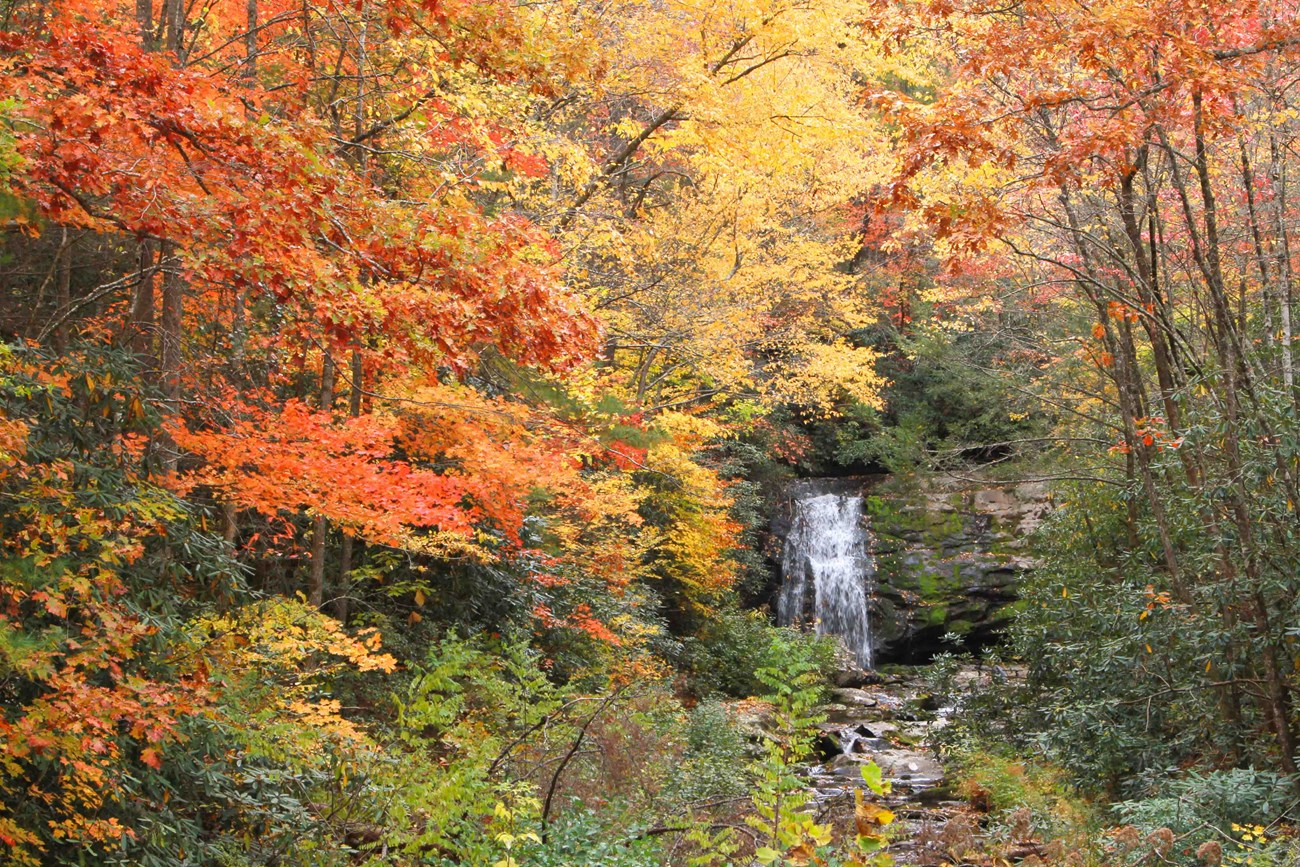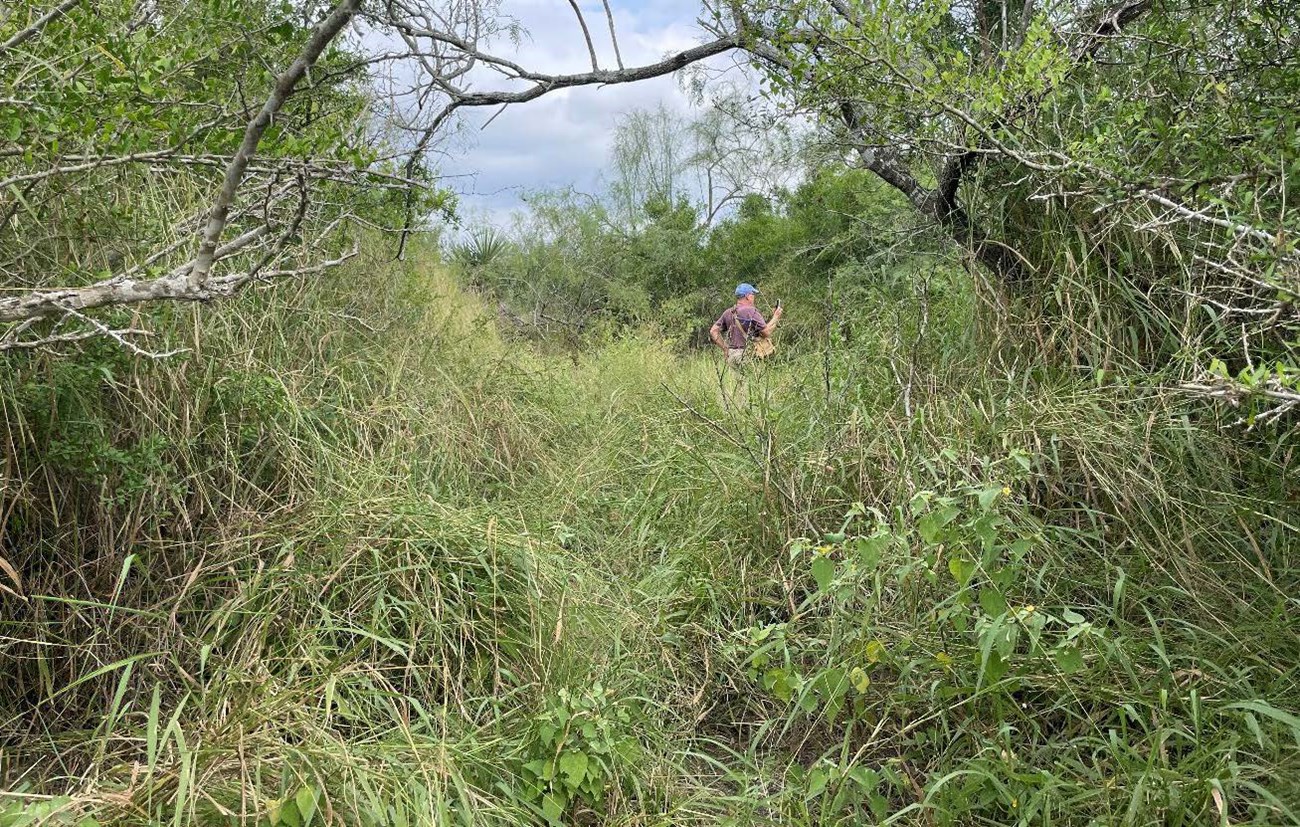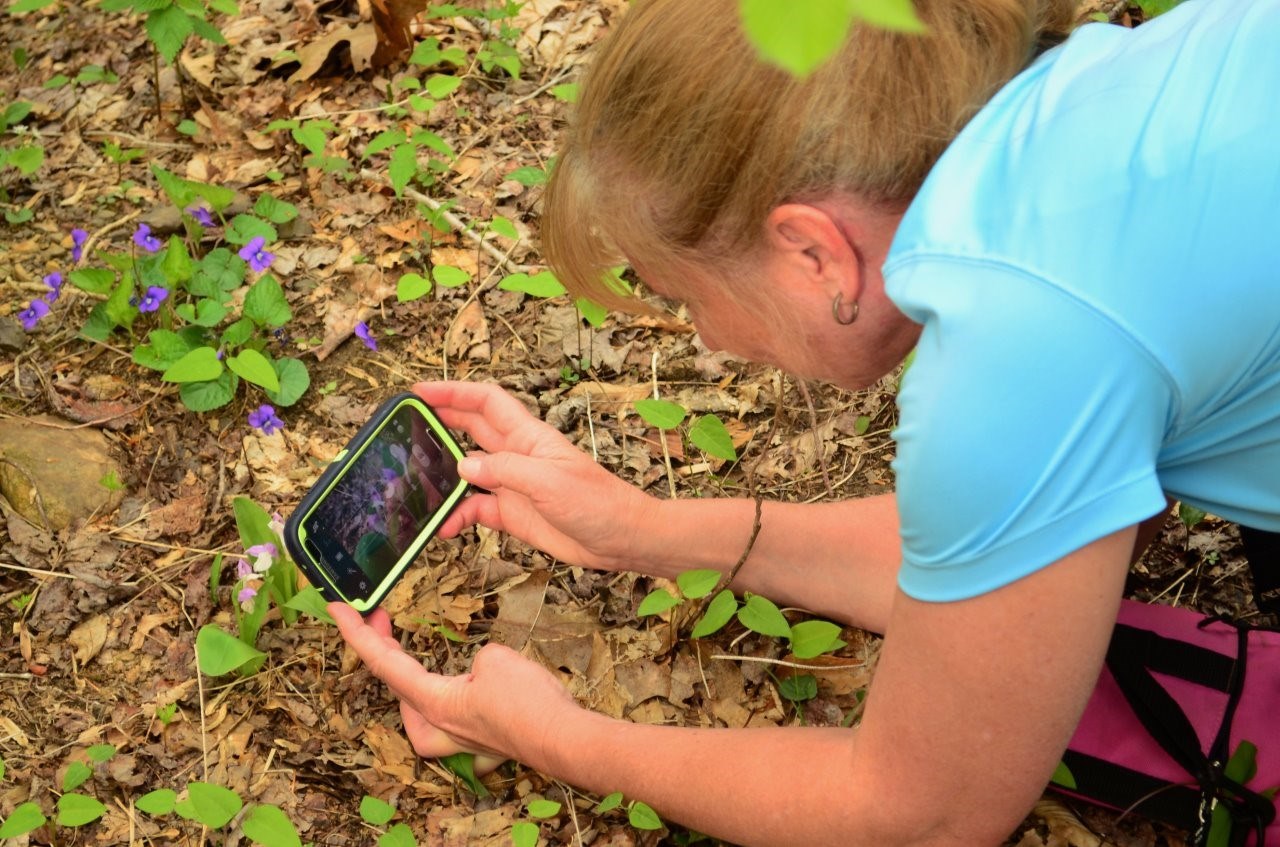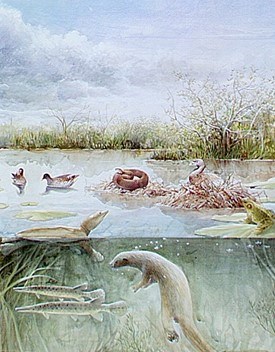Part of a series of articles titled Long-Term Vegetation Monitoring in Southeastern Parks.
Article
Southeastern Plants: Ecosystem Anchors Under Threat

NPS/Warren Bielenberg
Why Do Healthy Plant Communities Matter?

NPS
Plants are more than background scenery; they are the anchor in a healthy ecosystem. They form the foundation of the food chain, offering food, shelter, and nesting sites for wildlife. In the Southeast, these plant communities support a wide range of species like flying squirrels, black bears, tortoises, river otters, alligators, and various pollinators such as bees, butterflies, and birds.
In addition to supporting wildlife, plant communities benefit parks and people in many ways. They protect shorelines from extreme weather, filter water, cycle nutrients, stabilize soil, and sequester carbon, which are examples of processes known as ecosystem services. These services directly benefit people, providing cleaner air, safer shorelines, better flood control, and healthier spaces for recreation.
However, plant communities in the Southeast face significant challenges from invasive species, habitat loss, and rapidly changing climate conditions.
Invasive Species: A Growing Threat

NPS

NPS
Invasive species can crowd out and replace native plants, disrupting local ecosystems and harming biodiversity. One of the most aggressive invaders, Guinea grass (Megathyrsus maximus), has long been a problem in South Florida and the Virgin Islands and is increasingly spreading in southern and central Texas. NPS ecologists have documented its rapid expansion at Palo Alto Battlefield National Historical Park and San Antonio Missions National Historical Park, which are home to the state-threatened Texas tortoise. Annual surveys for Texas tortoises at Palo Alto Battlefield have revealed that there are fewer and fewer in areas that are most heavily invaded by Guinea grass, indicating that this invasive plant is reducing available habitat for the tortoises.
In the Cumberland Piedmont Network, park staff partner with community science enthusiasts and use apps like iNaturalist to aid in the early detection of invasive species. These data inform and assist park managers in making science-based park management decisions. The South Florida Caribbean Network has a similar project in three parks including Biscayne National Park, where staff routinely look for potential new invaders in areas that have the highest chances of infestation, such as trails, waterways, boat launches and campgrounds.

PHOTO COURTESY OF DEBBI EXBERGER

NPS/Robert Hynes
Habitat Loss and Fragmentation
Within and around park boundaries, habitat degradation is possible. Altered hydrology, climate-driven changes, and other influences can all reduce the integrity of plant communities. Habitat loss reduces the space available for plants to grow, ultimately harming the health and resilience of plant communities. For example, the loss of freshwater sloughs and hardwood hammocks in Everglades National Park has contributed to declines in both plant and animal biodiversity. This decline can negatively impact native wildlife, such as threatened or endangered species like the Florida panther, manatees, crocodiles, and butterflies.Rapidly Changing Climate Conditions
Across the region, shifting rainfall patterns, increasing drought, and rising temperatures affect plant health and their ability to regenerate. At Great Smoky Mountains National Park, for example, high-elevation spruce-fir forest communities depend on cooler conditions and cloud cover to thrive. When trees and other plants experience climate stress, they become more vulnerable to pests, invasive species, and even death. If the forest community can maintain its fog and cloud cover, there is hope for its survival. However, if conditions become drier and warmer with less fog or cloud cover, the future of this ecosystem may be uncertain.
Long-term monitoring of plant community condition supports the National Park Service mission to preserve natural resources unimpaired for future generations. By detecting ecological trends and stressors—such as invasive species expansion, habitat degradation, and climate-induced shifts—scientists provide park managers with actionable data to guide adaptive management and maintain ecosystem resilience.
Southeast Vegetation Monitoring
-
 Appalachian Highlands Network
Appalachian Highlands NetworkThe Appalachian Highlands Network monitors rare plant communities called Cumberlandian cobble bars, or "river scour prairies".
-
 Cumberland Piedmont Network
Cumberland Piedmont NetworkPreserving forest vegetation communities is a priority for parks within the Cumberland Piedmont Network.
-
 Gulf Coast Network
Gulf Coast NetworkGulf Coast Network parks contain unique plant communities, from the diverse groundcover of pine savannahs to species-rich forests.
-
 South Florida/Caribbean Network
South Florida/Caribbean NetworkForest communities are an important natural resource and cover a large portion of the park units of the South Florida/Caribbean Network.
-
 Southeast Coast Network
Southeast Coast NetworkOver 3,000 plant species are distributed throughout 180 vegetation communities in the Southeast Coast Network.
Tags
- abraham lincoln birthplace national historical park
- big cypress national preserve
- big south fork national river & recreation area
- big thicket national preserve
- biscayne national park
- blue ridge parkway
- buck island reef national monument
- canaveral national seashore
- cape hatteras national seashore
- cape lookout national seashore
- carl sandburg home national historic site
- castillo de san marcos national monument
- charles pinckney national historic site
- chattahoochee river national recreation area
- chickamauga & chattanooga national military park
- congaree national park
- cowpens national battlefield
- cumberland gap national historical park
- cumberland island national seashore
- dry tortugas national park
- everglades national park
- fort caroline national memorial
- fort donelson national battlefield
- fort frederica national monument
- fort matanzas national monument
- fort pulaski national monument
- fort raleigh national historic site
- fort sumter and fort moultrie national historical park
- great smoky mountains national park
- guilford courthouse national military park
- gulf islands national seashore
- horseshoe bend national military park
- jean lafitte national historical park and preserve
- kennesaw mountain national battlefield park
- kings mountain national military park
- little river canyon national preserve
- mammoth cave national park
- moores creek national battlefield
- natchez trace parkway
- ninety six national historic site
- obed wild & scenic river
- ocmulgee mounds national historical park
- padre island national seashore
- palo alto battlefield national historical park
- russell cave national monument
- salt river bay national historical park and ecological preserve
- san antonio missions national historical park
- shiloh national military park
- stones river national battlefield
- timucuan ecological & historic preserve
- vicksburg national military park
- virgin islands national park
- wright brothers national memorial
- inventory and monitoring
- imd
- monitoring
- science
- research
- invasive species
- habitat loss
- aphn
- cupn
- guln
- secn
- sfcn
- biodiversity
- plants
Last updated: September 30, 2025
